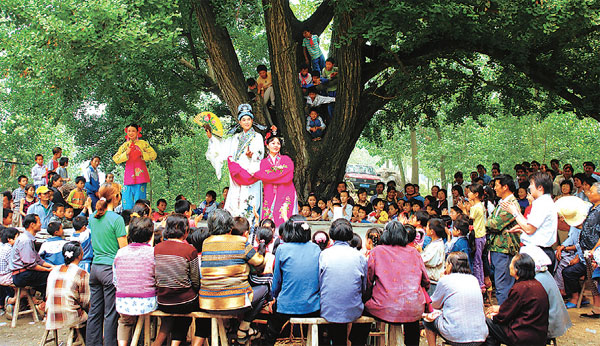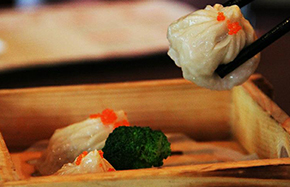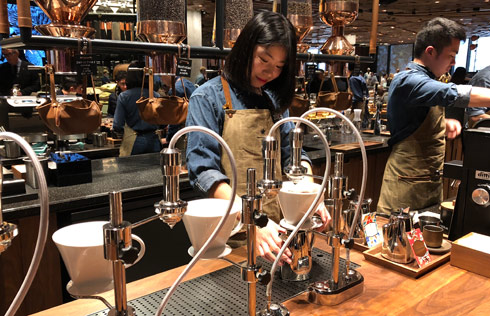Local opera serves as foundation of beloved national art form
|
The Couple Watching Lanterns is one of the classical Huangmei Opera programs. |
|
Han Zaifen, a renowned contemporary Huangmei Opera artist, performs on the stage. |
|
The locals' enthusiasm is the main reason for the development of Huangmei Opera. |
|
An Anhui opera depicts Romance of Three Kingdoms. |
China has thousands of types of local opera, but only a few of them have become famous nationwide.
The Huangmei Opera, a local form of opera in East China's Anhui province, is one of the mainstream opera genres in China, along with the Peking Opera in Beijing, Yue Opera in Zhejiang, Ping Opera in Hebei and Yu Opera in Henan.
The original Huangmei Opera was sung by women while picking tea, and was called the Picking Tea Song.
During the Qing Dynasty (1644-1911), the songs became a local opera popular in Anhui's Anqing city and its adjacent regions, combining local folk art and the Anqing dialect in singing and chants.
Huangmei Opera was active in border regions among Anhui, Hubei and Jiangxi provinces in the 18th century.
In the first half of the 20th century, Huangmei performances gradually became professional, rising from rural areas to city stages. Artists developed the opera and borrowed performance styles from other operas. They reformed the traditional chants, making the drama easy to understand with a lively rhythm.
The year 1952 was crucial for Huangmei Opera, when excellent artists Yan Fengying, Wang Shaofang and others gave performances in Shanghai for a big opera festival. Audiences from various areas were shocked and appreciated Huangmei Opera, attracted by its new singing forms and stories.
Huangmei Opera became very famous nationwide after that. The big success evoked the passion of Huangmei Opera artists and they created such classics as The Heavenly Match, The Herd Boy and the Weaving Girl and The Female Prince Consort.
It attracts the audience with its unique melody, its heart-touching narration and its simple and elegant costumes.
Anhui Opera
The most famous operatic genre in China is the Peking Opera, however audiences can judge from the dialect it uses that it is not a Beijing-native opera at all.
Indeed, the Peking Opera was born when the "Four Great Anhui Troupes" brought Anhui Opera, or what is now called Huiju, to Beijing in 1790 for the 80th birthday of the Qianlong Emperor. It was originally staged for the court and only made available to the public later.
In 1828, several famous Hubei troupes arrived in Beijing and performed with Anhui troupes. The combination gradually formed Peking Opera's melodies and the Anhui dialect is used in the singing, dialogues and narrations.
Anhui Opera originated from the "Huichi elegant tones" - operas that are popular in Huizhou (today's Huangshan city) and Chizhou prefectures during the Ming Dynasty (1368-1644).
It is among the oldest existing operas in China. Because it had incorporated the singing and performing styles of neighboring provinces and regions and made its own innovations, the opera has made a great contribution to development of China's timeless opera culture.
(China Daily 04/11/2017 page26)






















